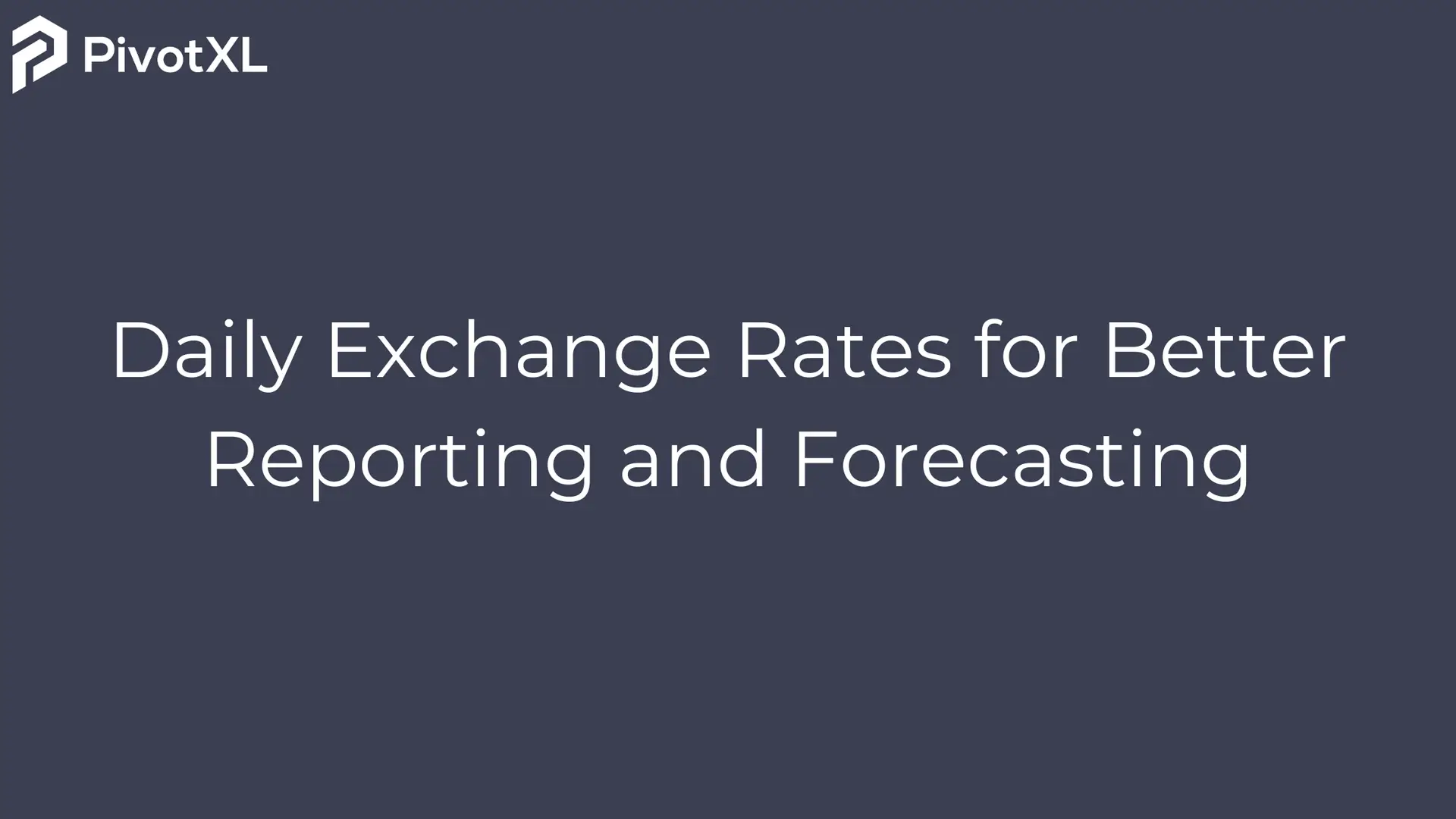How Exchange Rate Fluctuations Can Impact Your SaaS Business
While exchange rates rarely fluctuate drastically on a day-to-day basis, they do fluctuate. Small changes in exchange rates can lead to significant gains and losses over time, and if coupled with heavy macroeconomic pressures, can significantly influence your company’s key financial metrics.
Take the 2008 Great Recession, for example. As the impacts of the U.S. housing market collapse began reverberating in markets around the world, major currencies started to fluctuate wildly. The USD strengthened significantly against currencies like the GBP, EUR, and SGD. As a result, US-based businesses saw their revenue decrease as they converted payments made in these currencies to USD.
Similarly, the COVID-19 pandemic contributed to intense volatility in the currency markets amid all the uncertainty and economic disruptions. Major currencies initially dropped in value against the USD during the various lockdowns due to capital outflow and low exports but eventually picked up and stabilized as the pandemic was brought under control. With all the volatility in the exchange rates, companies converting payments in foreign currencies to USD during this time would need to be very strategic and ready to act quickly to avoid losing revenue in the process.
Why Do You Need to Track Your MRR and ARR Using Daily Exchange Rates?
MRR and ARR might not feature directly in financial reporting. However, they are crucial internal metrics that provide valuable insights into your business performance.
Tracking ARR and MRR with daily exchange rates allows you to:
- Get an accurate picture of your revenue based on currency fluctuations.
- Anticipate the impact of exchange rate changes on future revenue.
- Adjust pricing or take other measures in different markets to maintain profitability.
- Identify and mitigate potential losses due to currency fluctuations.
Most businesses review the impact of currency fluctuations on their MRR and ARR monthly, usually in alignment with their reporting cycles. Businesses with fewer foreign transactions may perform quarterly reviews to account for exchange rate fluctuations. Others, especially those companies with a high volume of foreign transactions, often opt for daily conversions.
How to Calculate Your SaaS Business’ ARR with Daily Exchange Rates
Step 1: Calculate MRR in the Customers’ Payment Currencies
Calculate the MRR for each customer or group of customers that pay in a foreign currency. You’ll use their payment currency for this step, summing up the revenue in that currency. This calculation will include recurring revenue from subscriptions, upgrades, and add-ons. Then, subtract any revenue you’ve lost due to downgrades or cancellations, again using the payment currency.
Monthly Recurring Revenue (MRR) Conversion: MRR (Converted) = MRR (Local Currency) × Exchange Rate (Daily)
Step 2: Convert MRR to Functional Currency
Convert each foreign currency MRR into the functional currency of your SaaS business (e.g., USD). This is where you will use daily exchange rates.
For conversion, use the exchange rate applicable on the transaction date when each payment was made.
Annual Recurring Revenue (ARR) Conversion: ARR (Converted) = ARR (Local Currency) × Exchange Rate (Daily)
Step 3: Aggregate and Annualize MRR
Once you have the MRR for each foreign currency converted to your functional currency, add them up to get the total MRR for the month. Multiply this total MRR by 12 to get the ARR.
ARR Calculation: ARR = Total MRR (Functional Currency) × 12
Example Calculation of ARR with Daily Exchange Rates
Let’s say your SaaS business has customers paying three currencies—EUR, GBP, and USD, and USD is your functional currency. Here’s your ARR calculation using the daily exchange rate:
| Currency | MRR | Exchange Rate to USD | Converted MRR (USD) |
|---|---|---|---|
| USD | 5,000 | 1.00 | 5,000 |
| EUR | 4,000 | 1.15 | 4,600 |
| GBP | 3,000 | 1.28 | 3,840 |
| Total MRR (USD) | 13,440 | ||
| ARR (USD) | 161,280 |
ARR = (5,000 + 4,600 + 3,840) × 12
ARR = 13,440 × 12
ARR = 161,280
Challenges of Currency Fluctuations When Calculating MRR and ARR
While calculating MRR and ARR with daily exchange rates may seem like a straightforward process, there are several challenges that SaaS businesses encounter when handling multiple currencies. These challenges can significantly impact revenue tracking, financial reporting, and overall business performance. Below are the key obstacles associated with currency fluctuations and their implications for your ARR calculations.
1. Exchange Rate Volatility
Exchange rate volatility is one of the biggest challenges when calculating MRR and ARR in multiple currencies. Exchange rates fluctuate daily due to various macroeconomic factors such as inflation rates, interest rate changes, geopolitical events, and market speculation. These fluctuations can impact your revenue in ways that may be difficult to predict or control.
For instance, if your business operates in multiple regions where exchange rates are highly volatile, the value of your revenue in your functional currency may change significantly from one day to another. This makes it difficult to maintain stable financial projections and revenue forecasts.
Consider a SaaS business that primarily reports revenue in USD but has customers in the Eurozone and the UK. If the Euro and the British Pound weaken against the USD, the same revenue collected in EUR or GBP will be worth less when converted to USD, reducing your reported ARR. Conversely, if the USD weakens against these currencies, your revenue will appear higher when converted. This kind of fluctuation can lead to unpredictable financial results, making long-term planning more complex.
To mitigate the risks of exchange rate volatility, businesses often implement financial hedging strategies or choose to report revenue in a single stable currency. However, neither approach completely eliminates the risk of fluctuating revenue figures due to currency movements.
2. Financial Reporting Challenges
Accurate financial reporting is essential for SaaS businesses, particularly those dealing with investors, stakeholders, or regulatory compliance. When you operate in multiple currencies, tracking foreign exchange (FX) gains and losses accurately is crucial for consolidating financial statements.
If exchange rate fluctuations are not correctly accounted for, financial reports can present misleading revenue figures. This can lead to:
- Inaccurate revenue growth analysis.
- Misrepresentation of financial performance to investors and stakeholders.
- Regulatory compliance issues, particularly in cases where accounting standards require proper FX gain/loss reporting.
For example, if a company converts its revenue to USD at the beginning of the month but fails to account for exchange rate movements by the end of the reporting period, the ARR calculation could be significantly off. This discrepancy can result in financial statements that do not reflect the company’s true financial health, potentially affecting investor confidence.
Additionally, finance teams must work harder to reconcile discrepancies caused by fluctuating exchange rates. Many businesses use financial planning software, like PivotXL, to track exchange rates in real-time and automate conversions for more accurate reporting.
3. Revenue Recognition Issues
Revenue recognition is a critical aspect of financial reporting, and currency fluctuations can create significant inconsistencies in this process.
The revenue earned from foreign currency conversions is not the same as revenue from operational activities. If exchange rates fluctuate significantly between the time a customer is billed and the time the payment is received, it can distort reported revenue. This can falsely inflate your company’s profits or losses.
For instance, if a SaaS company invoices a European customer €10,000 at an exchange rate of 1.10 USD/EUR (meaning $11,000 in revenue) but, by the time the payment is received, the rate has dropped to 1.05 USD/EUR, the converted revenue would now be $10,500. This $500 loss due to exchange rate fluctuation does not reflect actual business performance but rather FX exposure.
Such discrepancies can cause misalignment between actual cash flow and reported revenue, leading to confusion in financial statements. Businesses must decide whether to record revenue at the exchange rate on the invoice date or the payment receipt date, which can affect financial consistency.
Accounting standards such as IFRS 15 and ASC 606 require companies to account for revenue based on when the service is provided rather than when payment is received. However, companies must also adjust for currency conversion differences, further complicating ARR calculations.
Currency Fluctuations Can Also Increase the Risk of Customer Churn
While the impact of exchange rate fluctuations is often discussed in the context of financial reporting, it is also important to consider how these changes affect customer behavior—particularly churn rates.
When the value of a currency drops significantly, customers in that region may find your product more expensive in their local currency. This increase in cost can lead to a higher churn rate, as customers may start looking for more affordable alternatives or downgrade to lower-tier plans.
For example, if your SaaS business charges $100 per month for a subscription and a European customer initially pays €90 at an exchange rate of 0.90 USD/EUR, a sudden shift to 0.85 USD/EUR would mean they now have to pay €95 for the same subscription. This price increase, although unintentional, may cause some customers to reconsider their subscription, downgrade, or even cancel altogether.
To mitigate churn due to currency fluctuations, businesses should:
- Offer regional pricing that adjusts for exchange rate changes.
- Provide discounts or promotions during periods of high currency fluctuation.
- Communicate with customers about pricing adjustments to avoid unexpected price hikes.
By proactively addressing the impact of exchange rate movements, businesses can maintain stronger customer relationships and prevent unnecessary churn.
Strategies for Overcoming the Impact of Exchange Rate Fluctuations
Currency fluctuations are an unavoidable part of doing business globally, but there are strategies you can implement to mitigate their impact on your MRR and ARR.
1. Use Reliable Data Sources for Exchange Rates
It is crucial to use accurate and up-to-date exchange rate data for your financial calculations. Several platforms and APIs provide real-time and historical exchange rate data, allowing businesses to:
- Monitor exchange rate trends.
- Perform accurate conversions.
- Improve forecasting accuracy.
Using financial automation tools like PivotXL, which integrates with real-time exchange rate APIs, can help businesses maintain accurate revenue tracking without manual intervention.
2. Review Historical Trends and Monitor the Market
Studying historical exchange rate trends can help SaaS companies anticipate potential fluctuations and adjust pricing strategies accordingly. By analyzing past currency movements, businesses can:
- Identify seasonal or market-driven trends.
- Forecast exchange rate impacts on revenue.
- Plan strategic currency hedging.
Financial planning software that tracks and analyzes historical data can provide valuable insights into how currency fluctuations have affected ARR over time.
3. Prioritize the US Dollar (When Possible)
The US dollar (USD) is the global reserve currency and is widely accepted in international transactions. While it may not be feasible in every market, offering pricing in USD can simplify transactions and eliminate currency fluctuation risks.
If your customers are willing to pay in USD, you can avoid exchange rate volatility issues altogether. Many global SaaS businesses offer the option for customers to be billed in USD, providing a more stable pricing model.
4. Keep Currency Convertibility in Mind
Some currencies are freely convertible, meaning they can be exchanged easily for USD or other major currencies, while others may have restrictions or limitations.
When expanding into new markets, businesses should research the convertibility of foreign currencies. Some key factors to consider include:
- Government restrictions on currency exchanges.
- Volatility and stability of the local currency.
- Additional costs or transaction fees associated with currency conversion.
Consulting with an international banking partner or financial expert can help businesses make informed decisions when entering new foreign markets.
Leverage PivotXL to Make Working with Foreign Exchange (FX) Rates Easier
Calculating ARR using daily exchange rates can help you get more accurate numbers for your SaaS business. PivotXL offers a robust solution to streamline ARR calculation by integrating financial planning, business budgeting, and revenue forecasting. With PivotXL, you can:
- Automate daily exchange rate conversions.
- Analyze historical exchange rate trends for better revenue forecasting.
- Ensure accurate financial reporting with real-time tracking.
PivotXL makes it easier to analyze exchange rate fluctuations and gain greater visibility into your MRR and ARR. Explore PivotXL and make informed business decisions with confidence.




